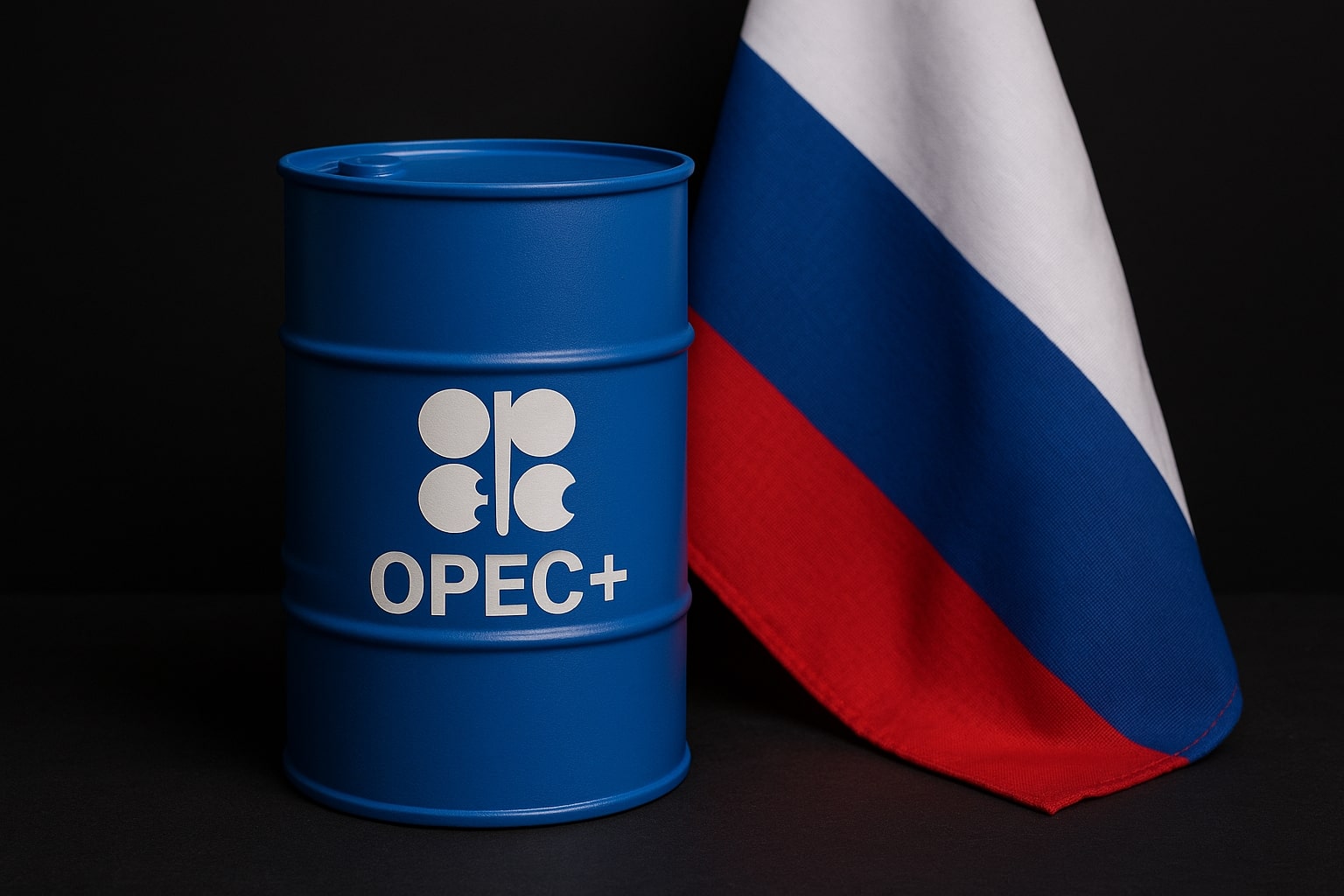
Oil Price - WTI at $63, Brent at $67 as Japan Slashes Russian Oil Cap to $47.60
OPEC+ supply boost, record stock builds, and Trump tariffs on India and China reshape crude outlook | That's TradingNEWS
Oil Market Faces Crosswinds as WTI (CL=F) Holds $63 and Brent (BZ=F) Near $67
Crude prices are trading with unusual volatility as WTI crude (CL=F) sits at $63.24 and Brent crude (BZ=F) at $67.43, both up around 1.5% intraday, but the forward outlook remains divided between geopolitical shocks and oversupply risks. The U.S. EIA projects Brent to average $67.80 in 2025 before falling to $51.43 in 2026, citing a massive inventory build of more than 2 million barrels per day through early 2026 as OPEC+ unwinds production cuts. The September Short-Term Energy Outlook highlights a steep decline from $68 per barrel in Q3 2025 to $59.41 in Q4, with lows near $49.97 in Q1 2026.
Japan’s $47.60 Russian Oil Cap Adds Pressure to Moscow’s Flows
Japan mirrored the EU in slashing its cap on Russian crude from $60 to $47.60 per barrel, though exemptions for Sakhalin crude make the move more symbolic. Japanese imports from Russia totaled just 599,413 barrels between January and July, only 0.1% of total imports, but the cap aligns Tokyo with G7 allies. More critical is Washington’s call to impose secondary tariffs on China and India for their Russian oil purchases, escalating trade tensions that already include Trump’s 50% tariffs on Indian exports. With India sourcing over 40% of its oil from Russia, discounted Russian barrels continue to offset global prices, even as Western sanctions bite.
Geopolitical Flashpoints: Drones, Tariffs, and Sanctions Reshape Flows
The oil market was jolted when Ukrainian drones struck Russia’s Primorsk terminal, a key Baltic port, lifting ICE Brent (BZ=F) to $67 per barrel. Meanwhile, the Trump administration is pressing G7 partners for secondary sanctions on India and China, a move that could redraw global crude flows overnight. Added to this are EU discussions on sanctioning Lukoil and Litasco, potentially disrupting supplies to Bulgaria and Romania. On the Middle East front, Israel’s renewed strikes and Iran’s agreement to resume nuclear inspections inject volatility, while Sudan’s only refinery—meeting 70% of local demand—was crippled by drone attacks, adding further instability.
OPEC+ Output and Non-OPEC Growth Weigh on Prices
OPEC+ raised production targets by 137,000 barrels per day in October, part of a broader unwinding of 1.65 mb/d of cuts still in place. Actual supply gains have lagged targets, with August output up 1.5 mb/d since Q1, led by Saudi Arabia and Gulf producers. Non-OPEC nations including the U.S., Brazil, Canada, Guyana, and Argentina are also pumping at record levels, contributing 1.4 mb/d of new supply in 2025. The International Energy Agency raised its 2025 demand forecast slightly to 740,000 b/d, but this pales compared to a supply increase of 2.7 mb/d, leaving the market structurally oversupplied into 2026.
Read More
-
UCO ETF Price Forecast: Can NYSEARCA:UCO at $18.57 Ride a 2026 Oil Squeeze?
18.12.2025 · TradingNEWS ArchiveStocks
-
XRPI at $10.50 and XRPR at $14.93 Hit XRP ETF Lows While XRP-USD Holds $1.84 After 30 Days of Inflows
18.12.2025 · TradingNEWS ArchiveCrypto
-
Natural Gas Price Forecast: Henry Hub Holds Around $4 as EIA Draw Hits 167 Bcf
18.12.2025 · TradingNEWS ArchiveCommodities
-
USD/JPY Price Forecast: Pair Holds Above 155 As BoJ And US CPI Set Up A Major Break
18.12.2025 · TradingNEWS ArchiveForex
Inventory Builds and Refinery Dynamics
Observed global stocks rose 26.5 million barrels in July, extending the year’s build to 187 million barrels. OECD inventories climbed by 6.9 million barrels, while China absorbed much of the surplus, boosting its crude stocks by 106 million barrels between February and August. Refinery runs surged to 85.1 mb/d in August but are expected to fall 3.5 mb/d through October as maintenance begins. Margins remain firm, with gasoline cracks improving even as diesel cracks weaken.
Technical and Trading Outlook for WTI and Brent
Technically, WTI crude (CL=F) shows strong support near $62, with the 50-day EMA at $64.41 acting as immediate resistance. A sustained break above $64.50 could re-open the path toward $68, while failure risks a slide back to $60. Brent (BZ=F) has support at $65, with upside capped at the 50-day EMA near $68, and only a breakout to $70 would confirm a bullish reversal. Traders are cautious, with money manager positioning shifting as Standard Chartered’s SCORPIO model flagged short-term weakness, projecting $65.31 settlement for mid-September.
Macro Risks and Investor Sentiment
Beyond supply-demand imbalances, macro factors weigh heavily. The U.S. Federal Reserve’s expected 50 bps cut in September could weaken the dollar and lend support to oil prices. However, German consumer sentiment has fallen to multi-month lows, and the end of the U.S. driving season reduces gasoline demand. Trump’s escalating tariffs and the possibility of secondary sanctions threaten to redraw crude trade flows, with India’s role as a Russian oil buyer creating price distortions. Analysts from BMI expect Brent to average $68 in 2025 and $67 in 2026, while Bloomberg consensus points to $68 in 2025 and $65 in 2026, reinforcing a subdued long-term picture despite short-term geopolitical volatility.
At present, WTI at $63.24 and Brent at $67.43 reflect a market balanced on geopolitical spikes versus oversupply realities. The data suggest near-term support from sanctions and strikes, but medium-term headwinds from inventories and output growth point to a bearish tilt unless supply disruptions intensify.



















